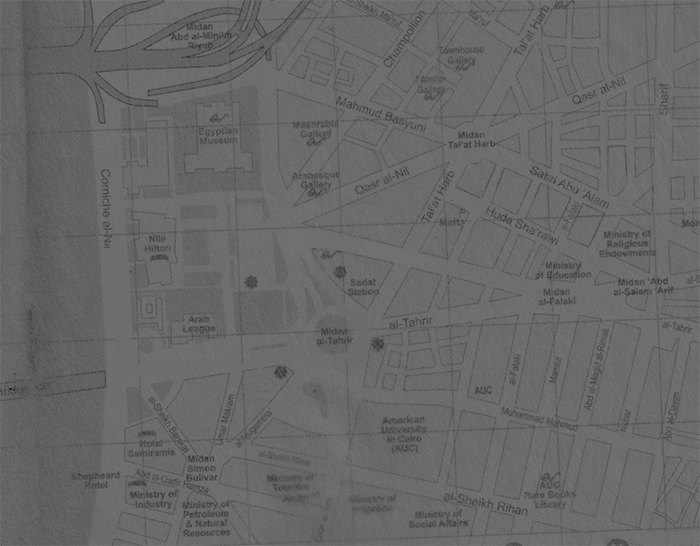Through a series of un/planned walks in the city, the artists explore the urban subconscious of Cairo and its psychogeography.

Places are fragmentary and inward-turning histories, pasts that others are not allowed to read…
This is a sort of knowledge that remains silent. Only hints of what is known but unrevealed are passed on “just between you and me.”1de Certeau, Michel. The Practice of Everyday Life (Chapter 7: Walking in the City), trans. Steven Rendall. Berkeley: University of California Press, 1984
Walking in the city is a speech act
a “spatial acting out of the place.”2Ibid, p. 98
Each stride an enunciation,
enacted in the dis/placement of the body
in the intricate paths taken,
in the pace of movement,
in reflective pauses along the way.
Tracing invisible paths
across the streets of the city,
through sites of trauma and protest,
past commemorative monuments,
around concrete barricades,
she marks through movement
informal and poetic moments of
reverie, remembrance, and resistance.
